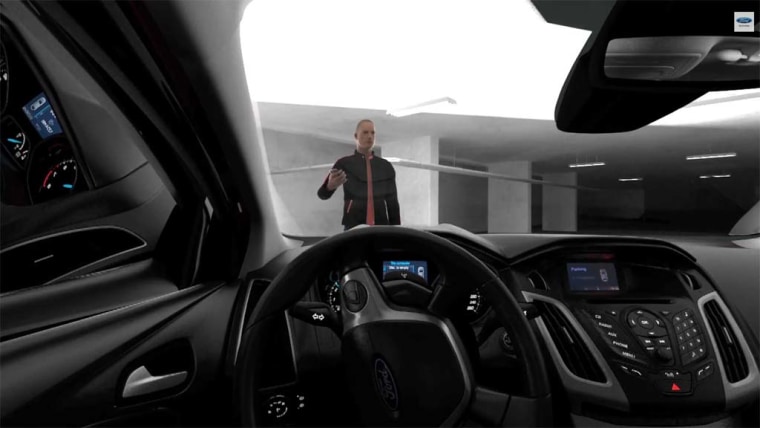A growing number of vehicles offer automated systems that make it easy for drivers who tend to freeze up when it comes time to parallel park. But Ford is demonstrating an even more advanced system that can drop you off and then park itself.
The technology brings the motor vehicle one step closer to autonomous driving — a concept that several manufacturers promise to introduce by decade’s end.
"Parking in today's cities can be stressful and difficult," said Barb Samardzich, Ford head of product development in Europe. "We want to make it as easy, efficient and accurate as possible."
Current parking assist systems use a variety of sonar, radar or even camera sensors to help motorists slip into parallel or perpendicular spots. But the motorist is required to participate, in some vehicles using the brake while in others operating both the brake and throttle.
The Ford system takes things a step further. The Fully Assisted Parking Aid allows a driver to exit the vehicle, push a button on the key fob and watch as the vehicle parks itself. For anyone who has had to drive by a spot too narrow to fit into and then exit the vehicle — or worse, who has come back from an errand only to find themselves pinned in, unable to open the car door, the technology could be a blessing.
Read more: Automakers "democratize" technology, moving high-tech from premium luxury to mainstream
The technology is being demonstrated at Ford’s proving grounds in Belgium — no surprise, considering the premium European motorists face as streets become increasingly crowded.
The technology uses a cluster of three low-power radar modules, ultrasonic sensors and a camera to scan the road up to 650 feet ahead. It can detect parallel, diagonal and perpendicular parking spaces while a motorist cruises along a city street or in a parking lot at speeds of up to 18 mph.
The driver can simply brake and press a button to have the Fully Assisted Parking Aid take control, and without having to operate brake or throttle. But the motorist also can opt to exit the vehicle and let the system go to fully automated mode with the touch of a button on the remote control.
Read more: The Bling is Back - Cadillac Reveals All-new 2015 Escalade
What has been dubbed by industry technologists as a “sensor fusion” allows the various radar, sonar and camera modules to work together, much as human drivers rely on their senses of hearing, sight and touch while navigating a road. And the technology behind the Parking Aid can handle other duties, as well. Among other things, it is capable of spotting other vehicles, as well as pedestrians, who might be stopped in the same lane, steering around obstacles — or bringing the vehicle to a halt, if necessary.
Similar collision avoidance systems are rapidly rolling out on a variety of vehicles from manufacturers as diverse as Subaru and Mercedes-Benz. The latter maker’s new 2014 S-Class model even can flash a special light at a pedestrian to alert them to step out of the way at night.
Such technologies are rapidly becoming more affordable, as well as more common, migrating steadily downward from luxury to mainstream products.
Read more: Kia's Hamsters have a new ride: Hip-hopping in the new 2014 Kia Soul
Volvo has demonstrated yet another technology that could take things another step beyond Ford’s Fully Assisted Parking Aid. It would actually allow a motorist to wave goodbye as the vehicle goes off on its own to find a parking spot.
Neither Ford nor Volvo is saying when their systems might come to market — but considering the rapid pace of improvement in smart car technologies, the unspoken answer might be “soon.” Indeed, Nissan recently promised to put a fully autonomous vehicle into production by 2020, and both General Motors and little battery-carmaker Tesla have suggested they won’t be far behind.
Several states, including Nevada and California, have already passed laws governing the operation of self-driving vehicles.
